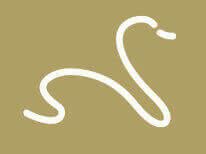Summary
You must work with RAW images.
What are JPG and RAW?
RAW data is what comes from the sensor of your camera. It contains all the information at the time of shooting, but that means that the image contains lens and camera artifacts. For example, most lenses make things darker near the edge of the picture; this is called vignetting.
JPG files are smaller than RAW files, and virtually every device and program works with them. They are produced by software in your camera which converts RAW data into a JPG. Camera makers ensure this conversion process works well because if it doesn’t, the resulting pictures will look crummy. So JPG files look good.
If you want more details, here is a good explanation of JPG and RAW.
Problem: Why You Need RAW
For the first few years of producing panoramas, I had so many other things to consider that I did not address the RAW v. JPG issue. I just worked with JPG files and everything was fine. Until this happened:

Each of the 19 shots that combine to form this image were shot with exactly the same camera, lens, focal length, exposure, ISO, and f-stop. Everything was locked down. They were all shot in less than 20 seconds. But the JPG files show several different sky colours.
Here is what went wrong: The camera decides how to convert from the RAW data into a JPG. It does this on a picture-by-picture basis. So its estimate of what would look best was done for each picture. Some picture are mostly water, some have a lot of trees, some are mostly white buildings. So the software made different guesses of several parameters to its conversion, including how much it should brighten each picture. This is a lot like having the pictures exposed for different time periods, which we know won’t work (see Exposure).
Solution: Workflow for RAW
Process all the RAW files with the exact same settings. There are lots of programs for this: various specialized tools, software that came with your camera, and Photoshop. Click here to see the result of creating the above panorama using RAW instead of JPG files; note that the sky is uniform.
The web has many articles about working with RAW data. Most are written by a photographer explaining how he or she likes to post-process images. The articles explain the writer’s personal preferences but contain nothing about panoramas. This article is typical – it gives useful guidance on how to work with RAW photos, but focuses on processing one picture at a time.
Working with panoramas in RAW is a bit different, because you need to make several photos all work together. There are two basic approaches:
- Stitch the photos in RAW, then manually adjust the resulting picture. This is often fast and convenient, but does not produce the best possible picture. This is because you need to adjust the RAW pictures to deal with lens-specific issues (distortion of shape or vignetting) and this can only be done properly one picture at a time. So the best approach is:
- Process the RAW pictures individually to deal with lens issues, then stitch them. The trick here is to make sure that you apply exactly the same transformations on every image, to avoid problems like the picture above.
Here are the steps I use:
- Photoshop: Open all the RAW files and use the Camera Raw Filter to do Lens Corrections: Remove Chromatic Aberration and Enable Profile Corrections. Save all the images as TIFF files at high resolution.
- Stitching software: Stitch the images into a panorama. Save a high resolution TIFF file of the whole panorama.
- Photoshop: Open the TIFF panorama file and adjust it to your taste. There are lots of tools for this, but the ones you need are probably in the Camera Raw Filter. Save the adjusted photo, perhaps as a JPG for other software to work with.
